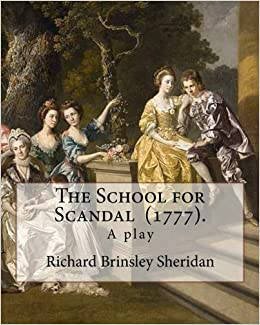About the Poem
Table of Contents
To The Evening Star is a poem written by William Blake. This Blake’s early poem made its first appearance in his 1783 collection entitled Poetical Sketches. It is a (I) short, as well as (II) deceptively simple poetic piece of writing.
- Here, the speaker of To the Evening Star prays to the planet Venus (that is personified as the “evening star”) for guidance as well as protection
- At the time when the star is in the sky the world is full of (a) Peace, (b) Calm, as well as (III) Love. But, when she withdraws lions, as well as wolves, roam freely
- In this way (suggests this poem that), in the absence of the heavenly light, the world becomes a place: (I) full of darkness, as well as (II) danger or peril
To the Evening Star William Blake Thou fair-haired angel of the evening, Now, whilst the sun rests on the mountains, light Thy bright torch of love; thy radiant crown Put on, and smile upon our evening bed! Smile on our loves, and while thou drawest the Blue curtains of the sky, scatter thy silver dew On every flower that shuts its sweet eyes In timely sleep. Let thy west wing sleep on The lake; speak silence with thy glimmering eyes, And wash the dusk with silver. Soon, full soon, Dost thou withdraw; then the wolf rages wide, And the lion glares through the dun forest. The fleeces of our flocks are covered with Thy sacred dew; protect with them with thine influence.
To The Evening Star Summary
The speaker of the poem addresses To The Evening Star as a pale-haired angel of twilight. This time the sun has gone or sunk quite low; it appears as if it is touching the mountaintops. So, the speaker requests/urges her:
- (I) to light her beacon of love
- (II) put on her shining crown
- (III) smile down on “us” means, people as they go to the bed. The speaker requests her to smile at the people because they make love. Moreover, as she draws the blue bedcurtains, he should sprinkle silverly dew on all the flowers as they go to bed for sleep.
The speaker requests To The Evening Star to allow or permit her servant, the west wind, to come to rest on the waters of the lake, with a glance of her sparkling or shining eyes, decree that all should be silent, as well as fill the darkening air with silvery light. All quite soon, she will disappear. Consequently (after that) these things will happen:
- (I) the wolves will roam free
- (II) The eyes of the lions will gleam/shine meanancingly in the darkness of the jungle.
The speaker further says that the wool of their (means, people) sheep is beaded with her silvery dew. That is why the speaker requests or prays for her to keep their flocks safe with her gentle power.
To The Evening Star Themes
William Blake introduces many themes in his poem To the Evening Star such as (I) Themes of Innocence vs Experience (II) Darkness (III) Light (IV) Divinity (V) Passion (VI) Purity, as well as (VII) Natural Beauty. But, Innocence vs Experience is the most important and highlighted theme of this short poem by William Blake. He describes the aforementioned theme in its last few lines.
Here it is also noteworthy that the setting of William Blake’s poem To The Evening Star shows or unveils the aforementioned people of Natural Beauty, particularly the Nocturnal one. Moreover, although implicit in this poem, “the interplay of light as well as darkness” is one more significant of this poetic piece. In addition, (I) the Divine Grace as well as (I) the Inherent Purity of Nature are (get) highlighted in this poem as well.
To The Evening Star Structure
The poem To The Evening Star comprises (total) fourteen (14) lines that do not rhyme together. So, it is said to be a poem in free verse. Anyway, in order to maintain the flow of the poem, William Blake makes the use of internal rhyme.
As far as the movement of the poem is concerned; it does not halt for a single moment for these internally rhyming lines.
Besides that, each line of this poem has ten (10) syllables. If a person divides the syllables into five units, he will be capable of finding that the stress falls on the second syllable of each foot. In other words, William Blake wrote this word in iambic pentameter.
u003cstrongu003eQues:u003c/strongu003e What is referred u003cemu003eTo as The Evening Staru003c/emu003e by William Blake ?
u003cstrongu003eAns:u003c/strongu003e The evening Star is regarded as the Greek goddess Venus who is the Roman goddess of (I) Love (II) Beauty (III) Fertility. It appears that William Blake starts prayer to the god by praising her beauty as well as the power of protection.u003cbru003eu0022Now, whilst the sun rests on the mountains, light,u003cbru003eThy bright torch of love; thy radiant crown,u003cbru003ePut onu0022u003cbru003e
u003cstrongu003eQues:u003c/strongu003e What is the tone of the poem To The Evening Star ?
u003cstrongu003eAns:u003c/strongu003e According to William Blake the star safeguards or protects people from the violent lion as well as the raging wolf who lurk in the darkness amidst the jungle. u003cbru003eMoreover, the poet beautifies as well as portrays the Innocence of nature. The expression, the flowers u0022shut its sweet eyesu0022 brings forth its sweet as well as subdued tone to the poem u003cemu003eTo The Evening Star u003c/emu003eby William Blake.
u003cstrongu003eQues: u003c/strongu003eWhat literary devices does William Blake use inu003cemu003e The Evening Star u003c/emu003e?
u003cstrongu003eAns:u003c/strongu003e William Blake uses u003cstrongu003e(I) u003c/strongu003eMetaphor u003cstrongu003e(II)u003c/strongu003e Personification u003cstrongu003e(III) u003c/strongu003eMetonymy u003cstrongu003e(IV)u003c/strongu003e Alliteration u003cstrongu003e(V)u003c/strongu003e Enjambment, and u003cstrongu003e(VI)u003c/strongu003e Allusion as literary devices in his poem u003cemu003eTo The Evening Staru003c/emu003e.



